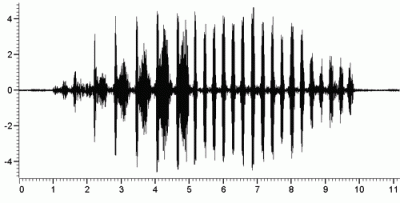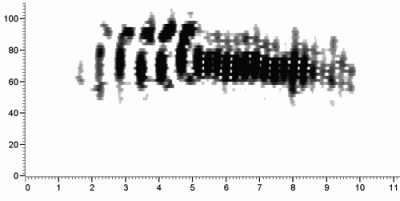This song species is the North American analogue of C. mediterranea in Europe. Like mediterranea, it is strongly associated with conifers, and it is characterized by conifer-matching dark-green coloration. Its range is northeastern North America from Connecticut northward into Canada and Alaska. Western variants of this song species occur in the Pacific Northwest south to Mexico, and probably comprise several additional, distinct song species, e.g., “C. mohave” in the American southwest. Shown is one SRU; the species is unusual in producing two different types of volleys in each song.
For more information, see Henry, C. S. 1980. The courtship call of Chrysopa downesi Banks [sic] (Neuroptera: Chrysopidae): its evolutionary significance. Psyche 86: 291-297.
The C. mohave biotype is described in Henry, C. S. 1993. Chrysoperla mohave (Banks) (Neuroptera: Chrysopidae): two familiar species in an unexpected disguise. Psyche 99(4): 291-308.
A study of possible adaptive features of lacewing songs to the properties of their distinct substrates is described in Henry CS, Wells MLM. 2004. Adaptation or random change? The evolutionary response of songs to substrate properties in lacewings (Neuroptera: Chrysopidae: Chrysoperla). Animal Behaviour 68: 879-95.

